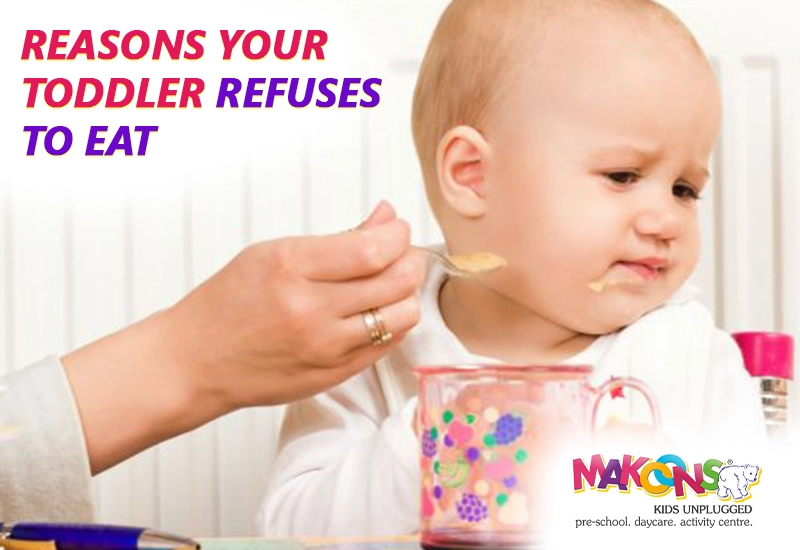The dinner table now functions as a battlefield. Your child’s plate looks almost perfect, and you’re at your wit’s end wondering if they are getting enough nutrients. It’s not just your toddler who is rejecting food. Toddler food issues are among the most often expressed worries in early life; almost half of parents report major feeding difficulties with children under three.
Few things irritate a parent more than cooking a healthy lunch only to see their child turn it down without thinking twice. The good news is most child feeding issues are developmental normal and temporary. And superfoods for kids digestion is important for their Health. Let’s investigate why your child could be saying “no” to meals and workable solutions to go beyond these difficulties.
Why Your Toddler Isn’t Eating: Understanding the Root Causes?
1 Independent Developmental Growth
Children find they have opinions between the ages of one and three and are anxious to share them! Refusing eating is more about claiming newly discovered autonomy than it is about the food itself. Your toddler’s independent muscles are contracting as they push away a dish and say “No!”
Although difficult during mealtimes, this developmental milestone is actually a good indicator of growth. Your youngster is developing their ability to make decisions and somewhat influence their environment.
2. Irregular Growth Patterns
Toddlers go through more irregular growth spurts than newborns who develop quickly and consistently. Their appetite swings greatly according to this natural pattern. They seem to subsist on air alone one week, then consume anything in sight.
A toddler may just have enough calories for the day if they miss dinner after a hearty breakfast and lunch. Though the pattern seems irregular to adults, toddlers are very good at controlling their intake depending on hunger.
3. Sensory Sensitivities
Many young children have enhanced sensory awareness, especially with regard to food textures, temperatures, and tastes.Perhaps what seems to be pickiness is sensory processing. Your child might decline meals that:
- Use diverse textures—like those of casseroles.
- feel gooey or slimy.
- Possess strong smells.
- Are either too hot or cold?
- Exhibit strong tastes.
Mealtime can be overwhelming for these sensitivities, which causes child food refusal even with healthy choices.
4. Distractions and Environment
Modern houses abound in stimuli, from buzzing phones to background TV. Toddlers, who by nature have short attention spans, often find it challenging to concentrate on eating when more fascinating objects are around them.
By making the dining experience unpleasant, even minute environmental elements like uncomfortable chairs, overly bright lighting, or loud household noises might cause toddler eating disorders.
5. Medical Issues
Although less common, persistent toddler feeding problems might occasionally indicate underlying medical issues that should be ruled out, including:
- Reflux, often known as stomach pain
- Food allergies or intolerances
- Oral motor challenges
- problems swallowing
- Obstruction of the colon
See your pediatrician if food refusal is followed by worrisome symptoms including weight loss, vomiting, diarrhea, or obvious pain.
Effective Strategies for Overcoming Toddler Eating Problems-
1. Establish a Consistent Routine
Toddlers enjoy consistency. Serving meals and snacks at around the same times every day helps control hunger patterns and provides security surrounding eating.
Particularly in the two hours before meals, try to restrict snacking to set times. Toddlers who have been nibbling all afternoon are unlikely to feel hungry at dinner time, which helps to explain why some toddlers skip meals.
2. Create a Pleasant Eating Environment
Make dinner a calm, free from distractions zone.
- Turn off TVs and tidy toys.
- As a family, sit together whenever at all possible.
- Where your child feels safe, use suitable seats.
- Limit meals to 20 to 30 minutes maximum.
- Keep a calm, good vibe.
Toddlers are more likely to engage willingly when the dining experience feels enjoyable.
3. Offer Choices Within Limits
Support your child’s need for autonomy by giving them well chosen options.
“Would you like peas or carrots?”
“Should we employ the green or blue plate today?”
This approach lets you preserve control of the nutritional quality of what’s provided while acknowledging their developmental desire for autonomy.
4. Practice Division of Responsibility
Today, nutritionist Ellyn Satter’s approach is the gold standard for managing child food rejection:
- Parents choose where, when, and what foods to present.
- Young children choose how and much to eat.
This distance removes the power struggle and recognizes your child’s capacity for self-regulation.Your responsibility is to give your child regularly healthy options, not to make them eat.
5. Model Healthy Eating
Toddlers pick knowledge via observation. Children are more willing to try different meals themselves when they watch parents and siblings savoring them. Prioritize family meals and show your child excitement for a healthy diet without coercing participation.
6. Maintain Constant Exposure.
Children may require 15 to 20 exposures to a new cuisine before embracing it, according to studies Keep presenting once turned off dishes alongside favorites without comment or pressure. Many parents give up too soon, so missing the chance to expose their child to constant low-pressure stimuli, thus broadening their palate.
Go through the List of Top Nutritious Food for Your Baby While Traveling
Conclusion
Recall that this difficult moment is just temporary. Most young children who go through periods of food rejection still grow perfectly and finally widen their food acceptance. While ideal nutrition at every meal is not the aim during the toddler years, developing a lifelong good relationship with food is.
You’re teaching important skills like responding to hunger cues, appreciating different meals, and making mealtime a joyful social experience—skills that go much beyond the toddler years—by keeping a cool, consistent attitude to toddler food rejection.
Long after this demanding period ends, your patience is laying the groundwork for good feeding habits that will help your child all their lifetime.



